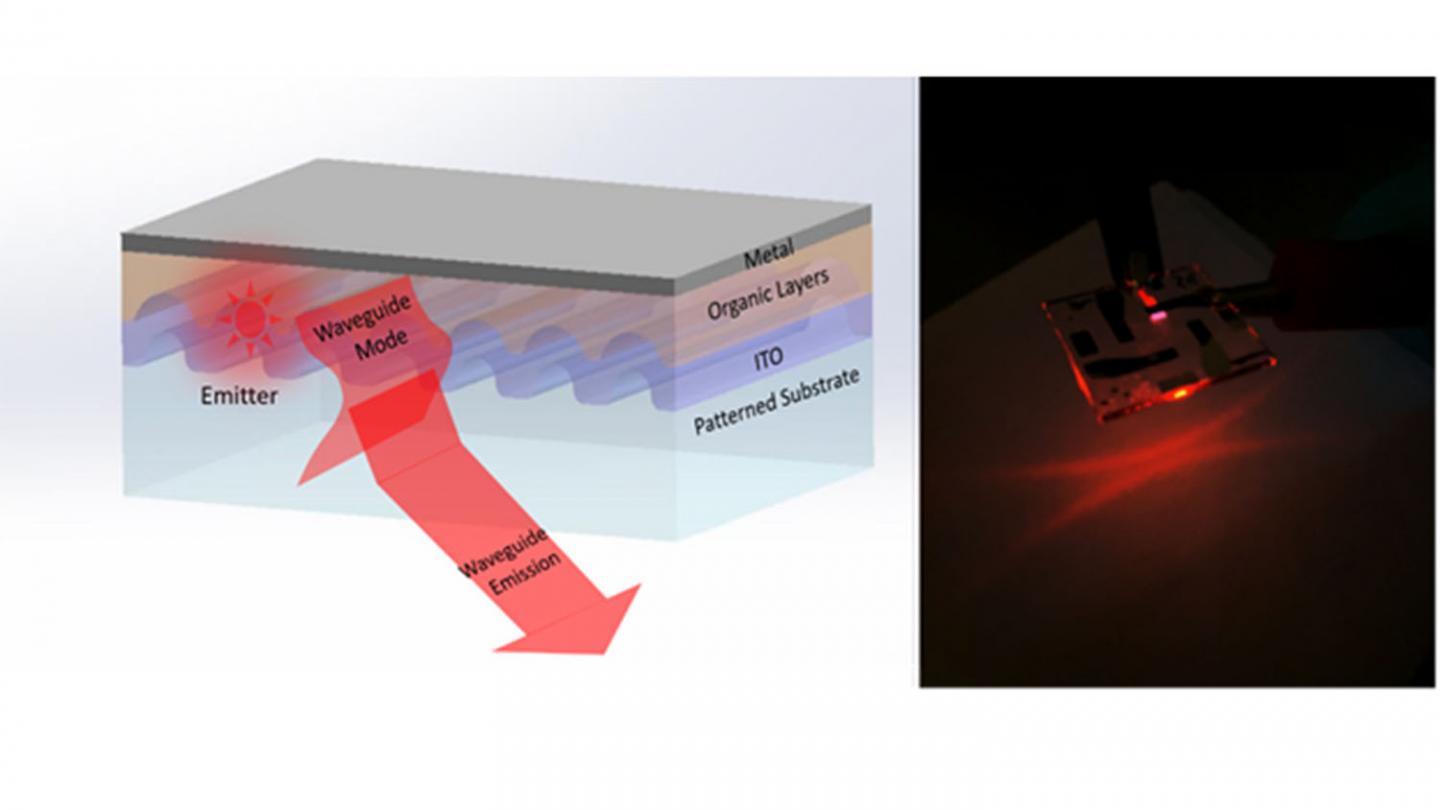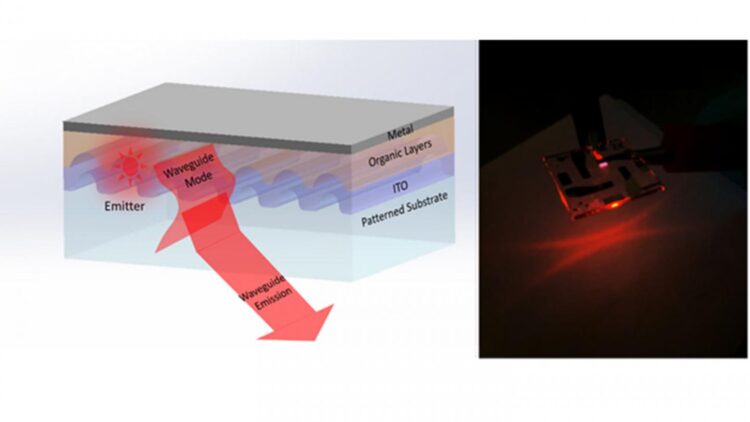
Credit: Franky So
Researchers from North Carolina State University and the University of Texas have developed and demonstrated a new approach for designing photonic devices. The advance allows them to control the direction and polarization of light from thin-film LEDs, paving the way for a new generation of virtual reality (VR) and augmented reality (AR) technologies.
“This is a fundamentally new device architecture for photonic devices,” says Franky So, corresponding author of a paper describing the work. “And we’ve demonstrated that, using our approach, directional and polarized emissions from an organic LED or a perovskite LED without external optical elements can be realized.” So is the Walter and Ida Freeman Distinguished Professor of Materials Science and Engineering at NC State.
In practical terms, an approach that allows for directional control of light using thin-film LEDs makes it possible to develop VR and AR headsets that are substantially lighter and less bulky. And the improved efficiency of the devices means that you get more photons out of the display unit for every electron that you put in.
For AR units, it also means that more light from the outside world gets through to the user. In other words, you’ll still be able to see the image being superimposed on your view of the real world, and your view of the real world will be clearer.
“Because the device we’ve demonstrated is simple to fabricate and can be easily scaled-up, our discovery of this strong directional and polarized light emission from OLEDs and perovskite LEDs has important applications for displays, lighting and other photonic applications,” So says.
###
The paper, “Directional Polarized Light Emission from Thin-Film Light-Emitting Diodes,” appears in the journal Advanced Materials. The paper was co-authored by Xiangyu Fu, Yash Mehta, Lei Lei, Liping Zhu, Nilesh Barange, Qi Dong, Shichen Yin, Juliana Mendes, Siliang He and Renuka Gogusetti at NC State; and by Yi-An Chen and Chih-Hao Chang at the University of Texas at Austin. The work was done with support from the Department of Energy under grant number DE-FOA-0001823.
Media Contact
Matt Shipman
[email protected]
Original Source
https:/
Related Journal Article
http://dx.





